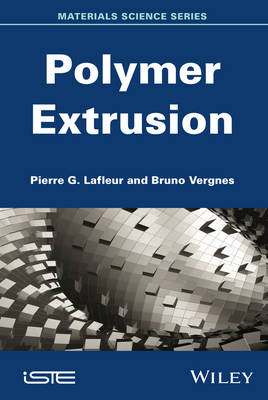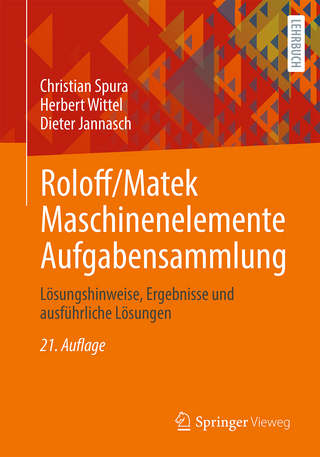
Polymer Extrusion
ISTE Ltd and John Wiley & Sons Inc (Verlag)
978-1-84821-650-1 (ISBN)
- Titel z.Zt. nicht lieferbar
- Versandkostenfrei innerhalb Deutschlands
- Auch auf Rechnung
- Verfügbarkeit in der Filiale vor Ort prüfen
- Artikel merken
Extrusion is by far the most important and the oldest processing and shaping method for thermoplastic polymers. This process concerns almost all synthetic polymers, as well as elastomers or food materials. Single-screw extrusion is mainly used nowadays to manufacture finished goods or semi-finished products. More than 90 million tons of thermoplastics are therefore processed every year.
Twin-screw extrusion may be divided into two systems: contra-rotating systems used within the context of PVC extrusion, for the manufacture of pipes or profiles; and co-rotating systems experiencing nowadays a very significant development, because of their significant adaptability and flexibility, which enables the manufacture of specific materials (polymer alloys, thermoplastic elastomers, filled polymers, nanocomposites). Extrusion is carried out by passing molten polymer through a tool called die that will give the product its final shape (films and sheets, rolled products, and electric cables). Thanks to the design of dies, we obtain at the output a product with controlled dimensions, uniform speeds and homogeneous temperatures. The book will discuss the same production types, but only in the case of coextrusion flows, i.e. multilayer stratified products. First of all, we will present in this book the physics of the mechanisms at stake, then propose more or less complex models in order to describe these mechanisms and then go forward in the interpretation of results and the control of condition flows.
Pierre G. Lafleur is Professor of Chemical Engineering at école Polytechnique de Montréal, Québec, Canada. Bruno Vergnes is Senior Scientist at CEMEF - MINES ParisTech in France.
Introduction ix
Chapter 1 Continuum Mechanics, Rheology and Heat Transfer Overview 1
1.1 Continuum mechanics 1
1.2 Rheology 7
1.3 Heat transfer [CAR 59, BIR 60, AGA 14] 11
1.4 Bibliography 19
Chapter 2 Calculation Methods 21
2.1 Introduction 21
2.2 1D solutions 22
2.3 2D solutions 28
2.4 Bibliography 34
Chapter 3 Single-Screw Extrusion 37
3.1 Introduction 37
3.2 Geometry and approximations 39
3.3 Solid conveying zone 45
3.4 Melting zone 73
3.5 Metering zone 85
3.6 Overall model 95
3.7 Technological improvements 99
3.8 Conclusion 105
3.9 Bibliography 105
Chapter 4 Co-rotating Twin-Screw Extrusion 109
4.1 Twin-screw extrusion 109
4.2 General overview of co-rotating twin-screw extruders 113
4.3 Solid conveying zone 120
4.4 Melting zone 121
4.5 Flow in the molten state 128
4.6 An overall model of twin-screw extrusion 151
4.7 Compounding application and production of complex materials 162
4.8 Conclusion 198
4.9 Bibliography 198
Chapter 5 Profile Extrusion 211
5.1 Profile extrusion 211
5.2 Pipe extrusion 229
5.3 Calibrators 240
5.4 Conclusion 241
5.5 Bibliography 241
Chapter 6 Production of Films and Sheets 245
6.1 Introduction 245
6.2 Cast film extrusion 249
6.3 Film blowing 256
6.4 Conclusion 298
6.5 Bibliography 298
Chapter 7 Wire Coating and Cable Insulation 305
7.1 General process 306
7.2 Commonly encountered problems 310
7.3 Analyses and solutions 310
7.4 Conclusion 330
7.5 Bibliography 331
Index 335
| Verlagsort | London |
|---|---|
| Sprache | englisch |
| Maße | 165 x 241 mm |
| Gewicht | 653 g |
| Themenwelt | Technik ► Maschinenbau |
| ISBN-10 | 1-84821-650-5 / 1848216505 |
| ISBN-13 | 978-1-84821-650-1 / 9781848216501 |
| Zustand | Neuware |
| Haben Sie eine Frage zum Produkt? |
aus dem Bereich


